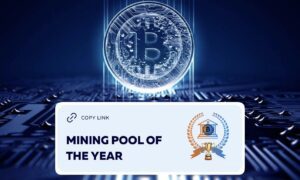The United States’ power grid is currently under tremendous strain. The massive surge of consumption driven by artificial intelligence, crypto mining, and soon quantum computing is further compounded by the push to electrify everything from EVs to household technologies. Because the grid itself is aging, even renewable and green energy compound existing vulnerabilities. “Different parts of the grid are just going to break down because a lot of the equipment is old and it just needs to be replaced and modernized,” says Bruno P. Allaire, CEO of Defiant International.
There’s an urgent need for a new approach. With more than a decade in oil and gas and a career spanning energy, consumer products, and emerging technologies, Allaire has seen how infrastructure pressures shape markets. To avoid further stress on an already fragile system, he advocates decoupling power‑hungry operations from the grid by producing electricity at the source of energy, most notably using stranded natural gas assets. “The solution is to integrate energy production directly with high‑demand computing so we can meet rising power needs without overwhelming an aging electric grid,” he says.
Turning Stranded Gas into Power
Natural gas resources exist across the United States, but many remain “stranded,” disconnected from pipelines and markets. This presents a prime opportunity: by acquiring such stranded natural gas assets at favorable prices and installing natural gas generators on-site, companies can generate electricity without ever feeding it into the grid. This model involves purchasing surface acreage, laying internal gathering pipelines, and converting the gas into electric power on location. The electricity then flows directly into crypto mining rigs and AI data centers, bypassing utilities and shielding operations from escalating retail power costs. “Instead of marketing that gas into a pipeline where the pipeline operator pays you the market price minus transportation, we just use it directly to produce our own electricity and power our own operations,” explains Allaire.
Building Toward Clean and Resilient Operations
While natural gas remains central to Allaire’s near-term strategy, he is also investing in hydrogen as the next evolution of clean power generation. Through emerging ventures in geologic hydrogen exploration and subsurface hydrogen production, he sees an opportunity to extend the same model of on-site power production to a greener energy source. “Geologic hydrogen is another potential, even cleaner energy source than natural gas,” he says. “The objective is to create net neutral natural gas operations by capturing CO2 emissions and ultimately advancing to fully green hydrogen-based power generation.” Geologic hydrogen, like natural gas, can also be stranded in remote areas, requiring innovative approaches to harness it effectively. By co-locating hydrogen production and computing infrastructure on-site, companies can also create microgrids that are both sustainable and independent of the already overtaxed national electric grid.
Preparing for Quantum Computing Demands
For energy experts like Allaire, quantum computing will be the ultimate test of U.S. energy resilience. “If you think AI and crypto mining require a lot of power, you should look at what the power demands are for quantum computing,” he says. Securing long-term natural gas and geologic hydrogen reserves is not only about meeting today’s power demands, it’s about preparing for the next era of large-scale computation. That preparation ties directly to the scale of U.S. natural gas reserves, which are vast and carry a unique form of wealth creation through mineral royalties paid to mineral rights owners. “When we’re producing natural gas, there’s a mineral rights owner—an American somewhere—who is benefiting from those royalties being paid,” he observes. “It’s a much better idea to pay those royalties to an American, who will spend most of that in their hometowns, stimulating local economies than to buy more imported oil and gas and send that money overseas.”
A Vertically Integrated Future
The convergence of energy and digital infrastructure represents one of the most significant opportunities of the decade. By vertically integrating energy production and computational operations, Allaire sees a way to control costs, reduce environmental impact, and insulate advanced technologies from systemic risks. “This is about buying power from ourselves,” he says. “We’re producing the gas, converting it into electricity, and using it directly in our operations. That keeps everything in-house and provides long-term sustainability.”
For more insights, connect with Bruno P. Allaire on LinkedIn.



































